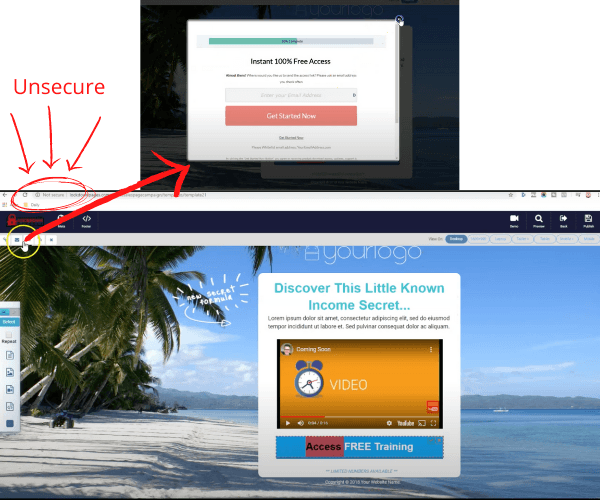

PE ratio only looks at a company’s earnings. PE ratio does have its own set of limitations. Unfortunately, it’s not as simple as that. To summarise, high PE ratio is bad and low PE ratio is good. Find the list of best growth stocks to buy in India in 2021. High PE ratio stocks are generally volatile and risky in nature. Efficient management and corporate governance. Low PE ratio can be a result of the following factors: Generally, a low PE ratio means the stock is undervalued. HPCL has the lowest PE ratio, meaning the stock is undervalued. This is way less compared to Reliance Industries 30 years and BPCL’s 22 years. Investors recover their share price in 4.7 years. The EPS to PE ratio of HPCL is the best. PE of Reliance Industries is very high compared to industry PE of 14. But it also generates highest earnings (EPS). Reliance Industries is the costliest among all three stocks. We can conclude the following from the above data: The below table shows the share price, EPS, PE and sector PE of these three companies. Its top two competitors are Bharat Petroleum Corporation Ltd (BPCL) and Hindustan Petroleum Corporation Ltd (HPCL). Use of PE Ratio in Peer & Industry Comparison PE ratio analysis works only when you are comparing the PE ratios of a company against its competitors, industry PE or with its own historical PE. In the above example what can you conclude from Reliance Industries PE ratio of 30.24? Is it undervalued? Overvalued? Fairly priced? Standalone PE ratio is useless for investors. PE ratio is a tool which helps you analyse how much you are paying for a share in a company’s earnings. This interpretation isn’t reliable as a company’s EPS keeps on changing as its profits increases or decreases over a period of time. This is assuming EPS of Reliance Industries stays the same Rs 65.65 throughout 30.24 years. This means it will take more than 30 years to recover your purchase price of Rs 1,982.05. In the above example, PE ratio of Reliance Industries is 30.24. It is also the number of years it takes to recover the stock’s purchase price. There is another interesting interpretation of PE ratio. This means you are willing to pay 30.24 times the cost to participate in the earnings of Reliance Industries. This means that you will need to spend Rs 1,982.05 to buy one share of Reliance Industries. The current share price of Reliance Industries is Rs 1,982.05. Total number of outstanding shares Let us understand PE ratio and EPS with a simple example. It is calculated by dividing a company’s profits after tax (PAT) by its total outstanding shares.Įarnings Per Share (EPS) Formula = Profit after Tax (PAT) PE ratio is calculated by dividing a stock’s current market price by its earnings per share. PE Ratio Formula = Current Market Price (CMP) Value investors like Warren Buffett advice investing in low PE stocks as these stocks have high growth potential and are available cheaply in the market. Whereas a high PE ratio means the stock is overvalued. 
Likewise, the PE ratio of Ashapura Minechem Ltd is only 2.52.Īs a rule of thumb, undervalued stocks have low PE ratio. PE ratio of Adani Transmission Ltd is 6,114.69! This means that investors are willing to pay 6,114 times for the company’s earnings. PE ratio is the price an investor is willing to pay for the company’s earnings.
Watch our detailed video on What is PE Ratio and How to Use it in Stock Analysis Hence it is also known as Price Multiple ratio or Earnings Multiple ratio. Their buying decision is dependent on the stock’s future earning capabilities, measured using the stock’s PE ratio.Īs the name suggests, Price to Earnings ratio is the price investors pay for a share in the company’s earnings. This is exactly how investors analyse stocks. Your decision to buy this card is dependent on the future earnings you will derive from it. In exchange, you will earn a rental income of Rs 700. For example: To buy Zaveri Bazaar, you will need to pay Rs 5,500. Every property has a price and earns a rental income. In monopoly, you get a fixed amount of cash to buy properties, cities, stations etc. Let us understand what is PE ratio using the beloved childhood game, Monopoly. PE ratio tells you whether you are buying the stock at its fair value. But how do you know if you are buying a stock at a discount or premium? This is where PE ratio comes to the rescue. When you buy a stock, you earn the right to a company’s future earnings and profits. This is done by comparing a stock’s market price to its earnings. Price to Earnings ratio or simply PE ratio is one of the most popular financial ratios used by investors to determine a stock’s fair value.






 0 kommentar(er)
0 kommentar(er)
